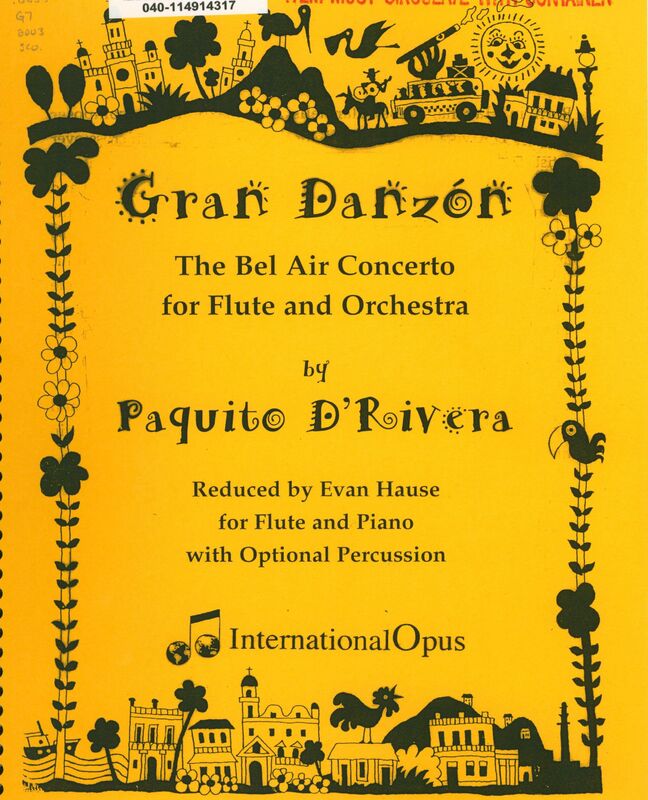Gran Danzón
Item
-
Score title
-
Gran Danzón
-
Composer
-
Paquito D'Rivera
-
Program note
-
The danzón, created in 1879 by Miguel Failde, a cornet player from the city of Matanzas, is a direct descendant of the Cuban danzas and contradanzas that were played in ballrooms back in Cuba’s colonial past. In those days the typical dance orchestra was comprised of one cornet, two violins, two clarinets in C, an ophicleide or valve trombone (sometimes both!), a couple of timbales and a guiro. Later on, at the beginning of the 20th century, the Charanga orchestras, also called Francesas (French), appeared on the scene and included one or several violins, a piano, double bass, timbales, guiro, and flute.
Since then, several generations of flutists—among them Antonio Arcaño, José Fajardo, Richard Egües, Pancho el Bravo, Johnny Pacheco, Joaquín Oliveros, Oriente López, Nestor Torres and Eddy Zervigón—have contributed enormously to the stylistic development of this musical form. It was their fresh and peculiar way of playing the flute that inspired the present work. At a certain point in my career I had lots of fun playing the flute with some dance groups, using what I had learned from them. When Marina Piccinini asked me to write a flute concerto for her, I immediately thought of basing the piece on the Cuban flute, a wooden instrument of five keys and six holes that has played a major role in the typical orchestras of my country as well as in the development of the national dance, the danzón.
The central theme of this concerto is based on the rhythmic cell of the danzón, the cinquillo cubano, and on la clave, which is the foundation of almost all Cuban music. However, other national patterns and elements of African origin are to be found throughout the piece, as well as small phrases and quotations that are reminiscent of old folkloric and popular themes. The second most important instrument in this work is the humble guiro (gourd) combining with the Cuban timbales (drums) and contrabass to provide the rhythm-machine that moves the Charanga as well as the feet of the dancers in the ballroom (and probably in the concert hall, too!).
The title Gran Danzón was borrowed from Astor Piazzolla’s Gran Tango. The subtitle “The Bel Air Concerto” was an idea of Marina’s, who knows of my passion for those classic automobiles of the 1950’s, about which I’ve often dreamt. Now I am the proud owner of a rebuilt 1957 Chevrolet Bel Air, which I drive around when not on tour.
Finally, this is my best way of paying tribute to the legendary danzoneros of the island Columbus called “la tierra mas Hermosa que ojos humans vieran”—“the most beautiful land that human eyes will ever see.”
 Paquito D'Rivera
Paquito D'Rivera


